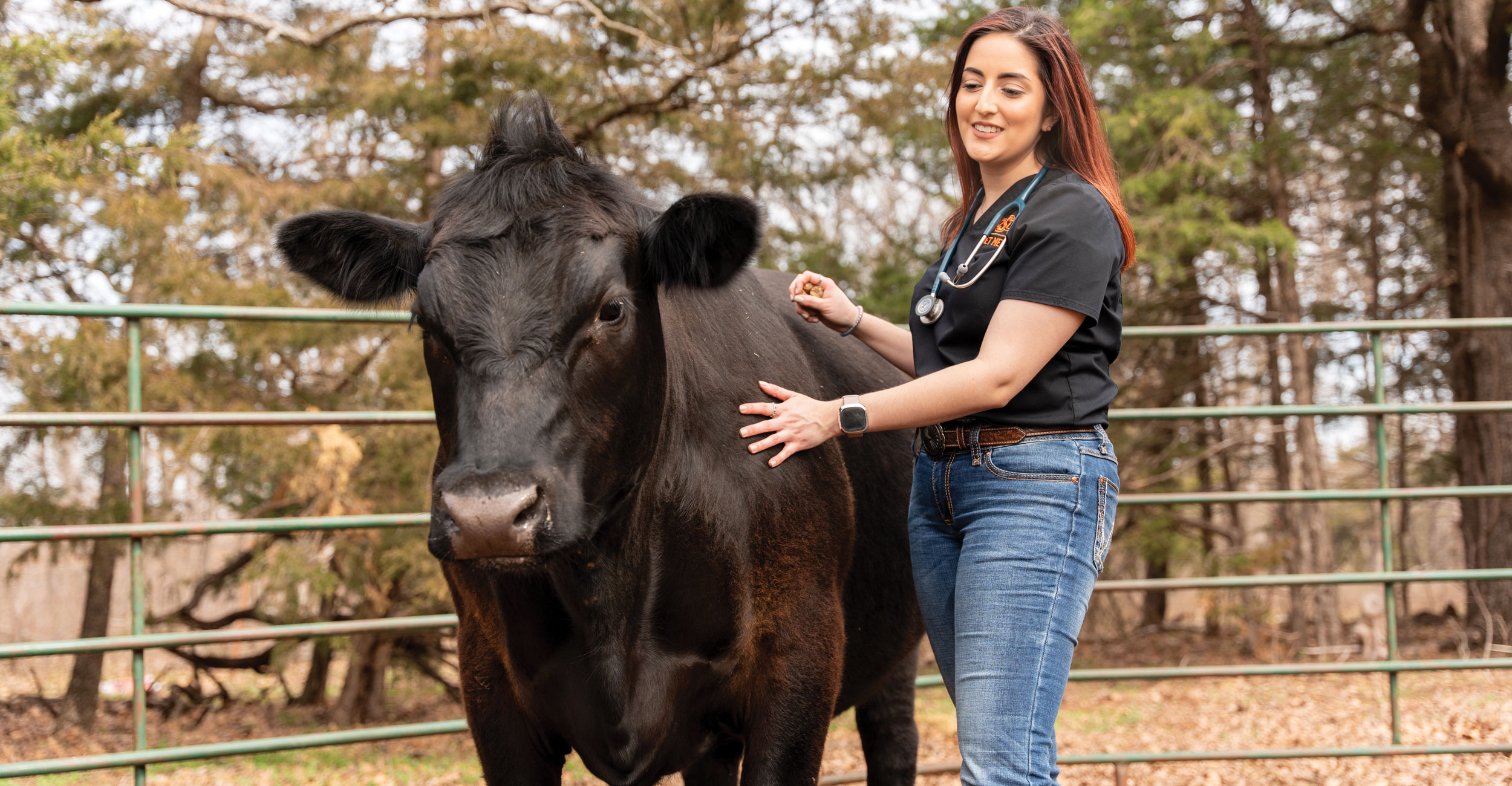
Animal Kingdom: OSU College of Veterinary Medicine celebrates 75 years of serving the state
Tuesday, September 5, 2023
Media Contact: Mack Burke | Associate Director of Media Relations | 405-744-5540 | editor@okstate.edu
In Oklahoma, veterinary medicine research starts in Stillwater.
If a practice is hiring a veterinarian from an in-state university, they are coming from Stillwater. When an animal — large or small — gets sick and needs help using the newest advances in medicine, they come to Stillwater.
And they have been for 75 years.
The College of Veterinary Medicine plays an essential role in Oklahoma State University’s land-grant mission, contributing to the economic and agricultural success of the state of Oklahoma.
For three quarters of a century, the college has been educating veterinarians, providing essential services and performing innovative research that results in improved health for both humans and animals.
Today, the college continues to make advancements that contribute directly to the fulfillment of its mission to be innovators in animal and human health as well as the university’s larger mission to improve the lives of people in Oklahoma, the nation and the world.
“I cannot overstate the importance of the College of Veterinary Medicine to our state’s agriculture industry,” Oklahoma Secretary of Agriculture Blayne Arthur said. “For years, the CVM’s educational work and innovative research has resulted in Oklahoma becoming one of the top states for animal health and medicine.
“Moving forward, I expect the CVM to become even stronger thanks to the support of President [Kayse] Shrum and the Oklahoma Legislature.”
On the horizon
The future of veterinary medicine at OSU is bright. Despite its humble beginnings 75 years ago, the CVM has proven its worth time and time again.
Because of that, the Legislature recently passed HB 2863, creating the Oklahoma State University Veterinary Medicine Authority (OSUVMA) and securing long-term support for clinical training at the OSU College of Veterinary Medicine. Following HB 2863’s passage, Dr. Shrum thanked the Legislature for its support.
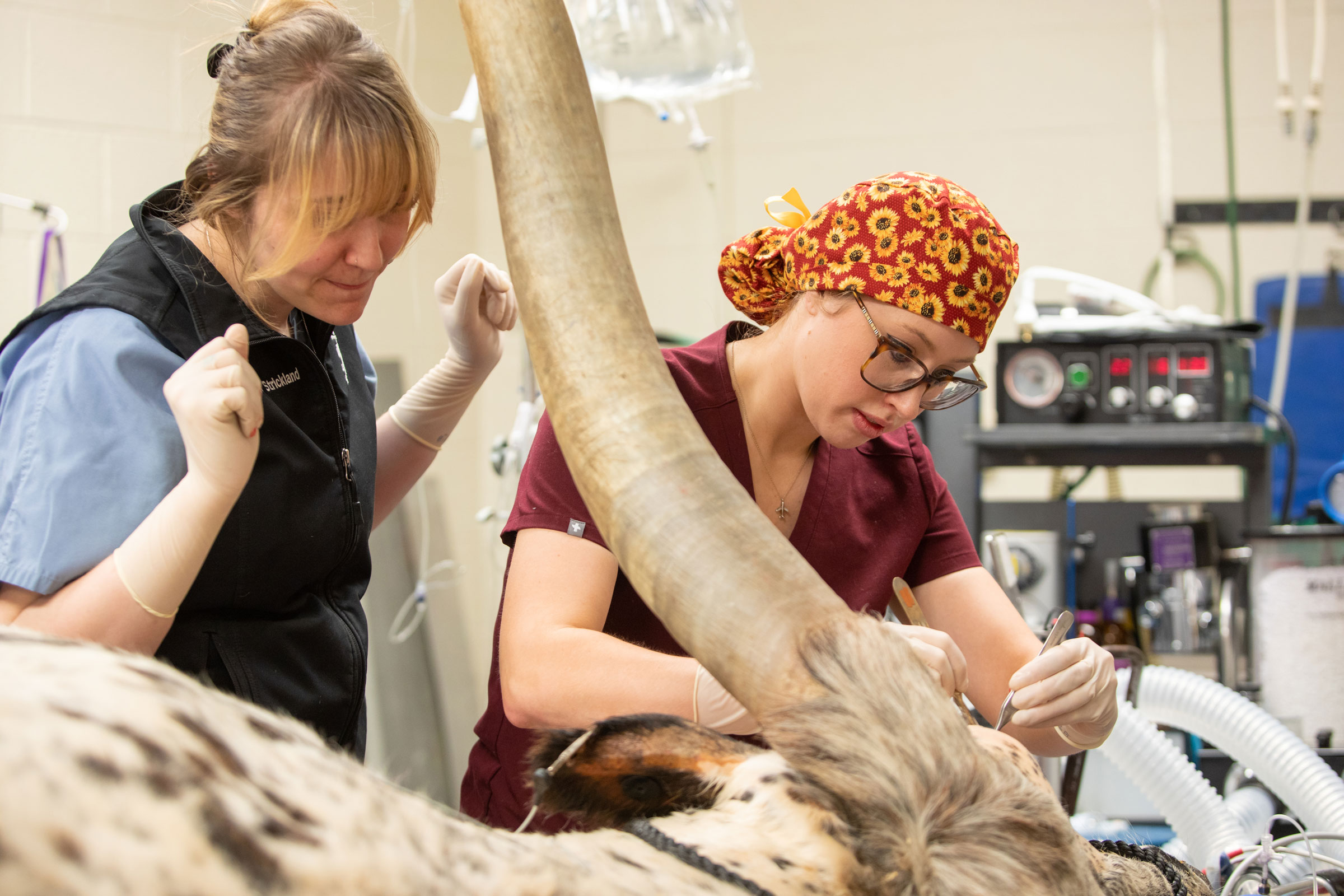
“This is a major step forward for Oklahoma’s economy and all who rely on crucial veterinary services, both at OSU’s veterinary teaching hospital and through our network of skilled graduates who are making a difference in communities across the state,” Shrum said. “Oklahoma State owes special thanks to Sen. Roger Thompson, Sen. Chris Kidd and Rep. Kevin Wallace, who provided critical leadership that culminated in a nearly unanimous legislative vote of confidence in the future of the CVM and hospital.”
CVM Dean Carlos Risco said he is excited about the transformational impact the OSUVMA will have on the college.
“The OSUVMA will support the hiring of new clinical faculty and enhance student training and operation of the veterinary teaching hospital,” Dr. Risco said. “This authority will allow the college to expand its efforts in order to fulfill its mission of being innovators in veterinary medical education, animal and human health.”
The authority will aid in sustaining diagnostic services to agricultural producers and the continuation of research to improve human and animal health, furthering OSU’s strategic One Health goals.
“The college is positioned to see great success in the future,” Risco said. “With the continued support of OSU administration, Oklahoma legislators and generous donors, the CVM will continue to grow, reaching new heights in teaching, research and Extension.”
Answering a need
The CVM’s impact wasn’t always as recognized as it is now.
It may come as a surprise to many that a school so vital to Oklahoma and OSU’s land-grant mission wasn’t a priority in the early years of OSU, then known as Oklahoma A&M College.
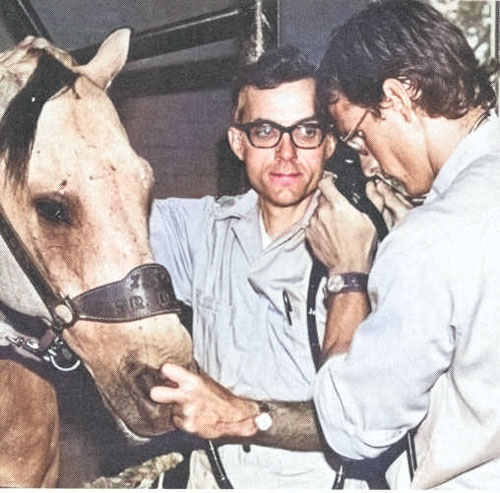
Although veterinary science has been part of the curriculum from the beginning, the then School of Veterinary Medicine did not open its doors until 1948.
The school was initially established in 1913 (23 years after OAMC was founded), but a lack of funding for clinical staff and interest from students prevented the program from taking off until the creation of the Oklahoma Veterinary Research Institute in 1945.
Enrollment in veterinary courses increased, primarily from veterans who were enthusiastic about crafting a better life after the end of World War II. At the same time, OAMC president Henry G. Bennett was transforming the college into a premier agricultural and mechanical institution by expanding its educational offerings — perfect timing to reinitiate the idea of a veterinary school.
With the growing interest in veterinary medicine, and only two other veterinary schools in the southern United States, Oklahoma veterinarians began to push for the creation of the state’s own veterinary school. They emphasized that “such a school could make a major contribution toward research into animal disease, especially cattle, the second largest industry in the state.”
Acknowledging the educational and economic needs of the state, Bennett ordered the school’s organization with the first class set to begin in 1947. In a May 1947 interview, Bennett said the veterinary school “answers one of the foremost educational needs in the progressive post-war college program.”
In his book, "A History of the Oklahoma State University College of Veterinary Medicine," author Eric I. Williams noted that the value of the school to the livestock industry and to its future in Oklahoma would be inestimable as the death losses of cattle, sheep and swine in 1946 alone added up to more than $5.5 million.
Dr. Clarence H. McElroy was appointed as the first official dean of the School of Veterinary Medicine and its doors opened on March 1, 1948. Dr. Duane R. Peterson gave the first lecture and lab on the topic of anatomy to the inaugural class, which consisted of only 31 students. While the program now takes four years to complete, the first class graduated in 1951 — after only three years and three months.
Oklahoma had its veterinary school.
“Addressing challenges in the One Health arena is a focus of the university’s larger strategy. The College of Veterinary Medicine’s success is a priority as it contributes to furthering the One Health mission in Oklahoma.”
The school expands
Over the next several years, faculty worked diligently to turn the school into a premier institution.
A formal research program debuted in 1953 when the Veterinary Research Institute was established. The school has since been on the forefront of veterinary research in diseases such as anaplasmosis and coronavirus.
The Comparative Biomedical Sciences Graduate program houses 45-55 graduate students on average each semester. Established in the early 1950s, the program produced its first Master of Science in 1956 and its first Ph.D. in 1957 — a milestone that propelled the school to further growth.
“Not only did the program help provide a new generation of veterinary medical scientists, its very existence helped attract faculty and enhanced the scholarly atmosphere in which students wishing to become veterinarians were taught,” Williams wrote.
In 1957, OAMC became Oklahoma State University and the School of Veterinary Medicine became the College of Veterinary Medicine.
Under the new moniker, the college continued to grow. The Oklahoma Animal Disease Diagnostic Laboratory opened in 1975, serving producers and animal owners in the state through its diagnostic services.
The college celebrated two milestones in 1981 — opening the Boren Veterinary Medical Teaching Hospital and receiving full academic accreditation by the American Veterinary Medical Association for the first time. The 1980s brought other milestones, including faculty member Dr. Eric Williams receiving the first Oklahoma Veterinarian of the Year award in 1980 (the first of many for the CVM) and the class of 1990 being the first freshman class to include more women than men.
The college would change names once again, becoming the Center for Veterinary Health Sciences in 2004. Things came full circle in 2019 when the name was changed back to the College of Veterinary Medicine, which is how it’s known today.
Over the years, the class size continued to grow and in 2017 it was expanded to its current count of 106 seats. With the expansion of class size, it became evident a new classroom space was necessary. Construction on a new classroom space that would include three large, versatile classrooms and a dedicated study space began in 2018. The Roger J. Panciera Education Center, named after the prominent CVM alumnus and faculty member, opened in 2021. Dr. Kelly Black, a 2001 OSU veterinary alumnus, has recently returned to lead the team at the veterinary medical center.
Veterinary medicine and One Health
Animal health has become more entwined with human health than ever, making the CVM’s purpose even more crucial. Veterinary and human medicine are deeply connected to each other and much of the research done within the scope of veterinary medicine has implications for human health.
For this reason, researchers and clinicians at the CVM approach everything through the lens of One Health, which is the concept of recognizing the interconnection between people, animals, plants and their shared environment.
The concept of One Health may not be new, but widespread formal recognition of it within the scientific and medical communities is. Efforts to implement a formal organization didn’t begin until the early 2000s. It’s no surprise that the OSU CVM was at the forefront of this mission.
In the years since, One Health has become an integral part of OSU’s land-grant mission.
“Addressing challenges in the One Health arena is a focus of the university’s larger strategy,” Shrum said. “The College of Veterinary Medicine’s success is a priority as it contributes to furthering the One Health mission in Oklahoma.”
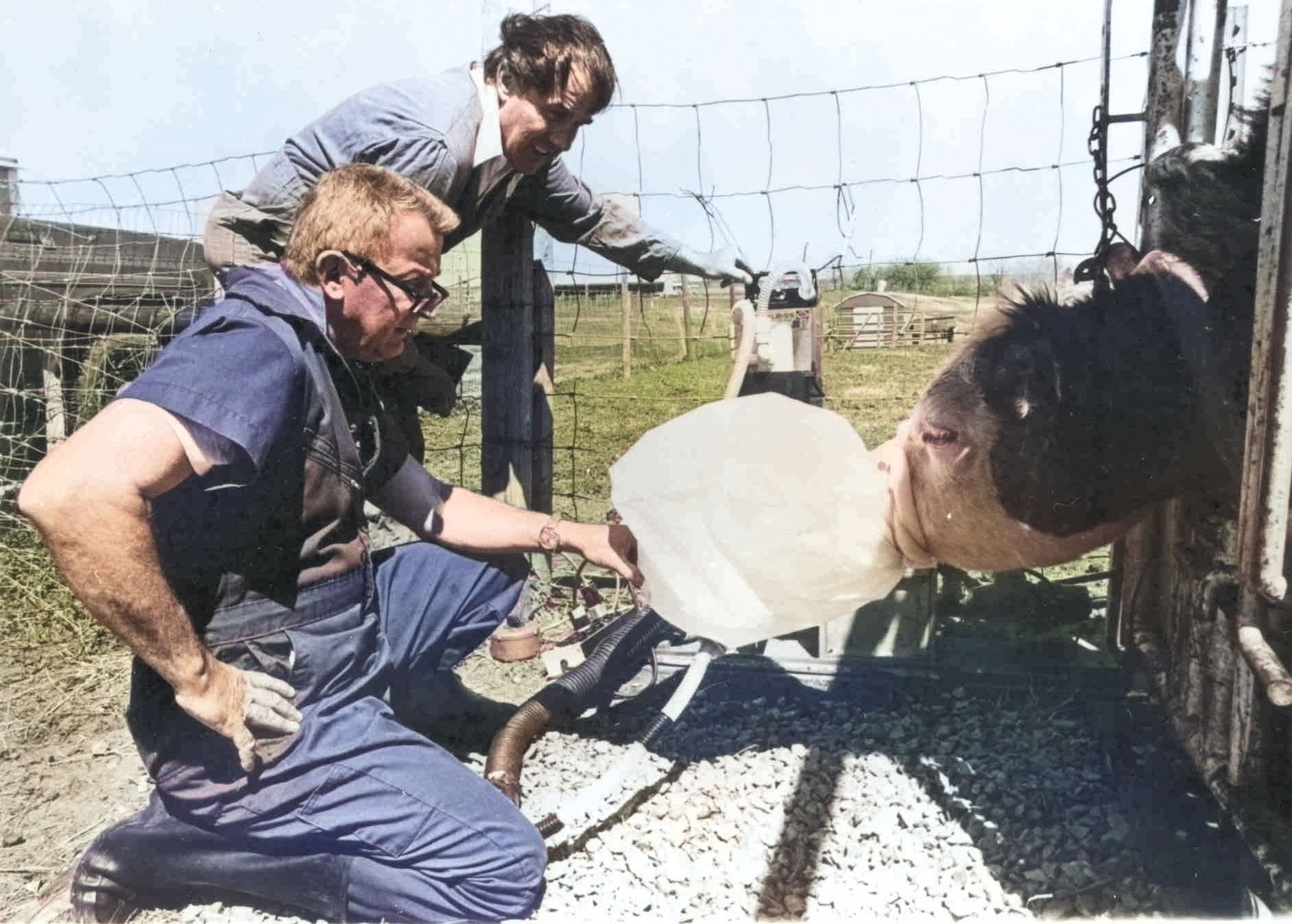
Dr. Lee Denney, a 1978 CVM alumna who served as the speaker pro tempore in the Oklahoma House of Representatives, said the One Health initiative is vital to the state’s food animal economy.
“One of our largest industries is beef cattle. Of course, we have pigs, sheep, goats, all the food animals, and keeping vigilance with these animals on foreign animal diseases coming into the state and keeping our food supply healthy is paramount to the state, and the vet school does that with their research,” Denney said. “… Then, you have to go to the small animal side of where we are in our society today with our pets. Dogs and cats, fish, birds, small rodents have become part of our families and working with that population, not only from a public health perspective to keep those animals healthy, but also from just an animal perspective, is taking care of a member of someone’s family.”
Denney, who said she has seen the school grow immensely since her time as a student, applauded the Legislature for passing HB 2863.
“I’m very excited about what the Legislature did for the vet school,” Denney said. “I think through the lean years, we just haven’t paid attention to what we should have as far as veterinary medicine and the plan that Dr. Shrum has for the vet school. It’s very fitting to be unveiling all these plans during our 75th anniversary.”
To highlight and advance the One Health initiative, Dr. Ashish Ranjan, CVM professor, initiated the creation of the Institute for Translational and Emerging Research in Advanced Comparative Therapy.
The institute leads the One Health mission of OSU by bringing together clinicians, scientists and researchers involved in fundamental discoveries, industry and foundations together.
Furthering the land-grant mission
While research is a huge part of the CVM’s academic side, its outreach with producers has been crucial to Oklahoma’s agricultural industry.
Agriculture remains one of Oklahoma’s largest industries with economic impacts that are essential for both our rural and urban economies, according to the Oklahoma Farm Bureau Foundation on Agriculture.
Oklahoma is the second largest beef cowproducing state in the nation, yet many areas lack the veterinarians necessary to service cattle operations, which reduces opportunities for rural prosperity and economic development. To address this issue, the Integrated Beef Cattle Program was developed.
“OSU’s Integrated Beef Cattle Program is a cross-disciplinary partnership across veterinary medicine, animal science, agricultural economics, Extension and agricultural leadership,” said Dr. Rosslyn Biggs, OSU CVM director of continuing education and OSU Extension beef cattle specialist. “This program addresses the current challenges in veterinary medicine and puts 20 practicing veterinarians alongside 20 veterinary students to help them develop various skills.”
The program, which was launched in 2020, has been received well by students, veterinarians and producers.
“The interest in the program has been outstanding and feedback from participants has been overwhelmingly positive,” Biggs said. “We are starting to see the connections that practitioners and students are making and look forward to continued growth.
“The program will lead to greater retention of new graduates in beef cattle practice and sustainable veterinary practices that provide enhanced animal health and welfare. We hope to address shortages in food supply veterinarians for years to come.”
Making their mark
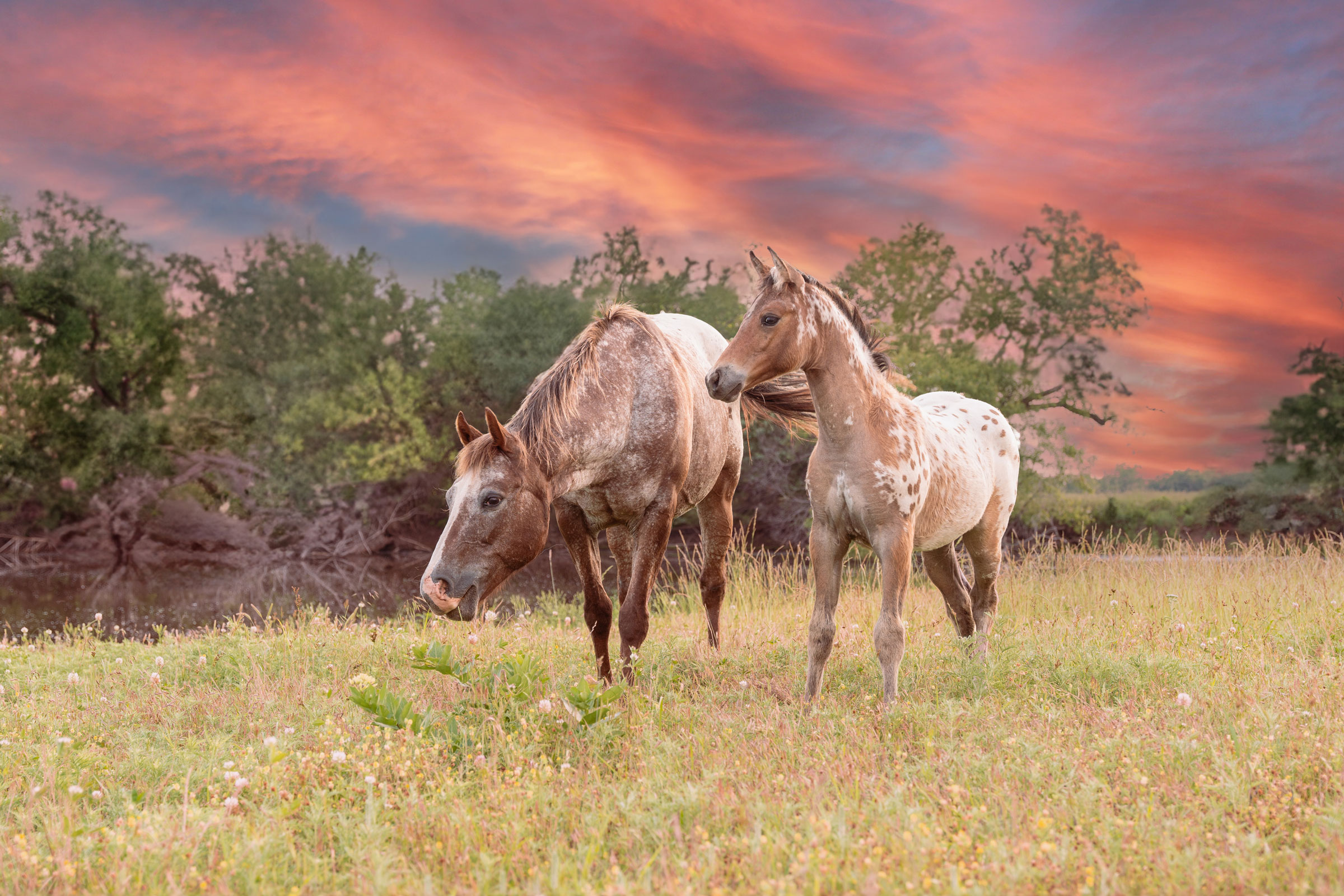
CVM researchers, faculty and alumni have left their mark in the veterinary medicine field with numerous advancements in research, diagnostics and treatment over the last 75 years.
Several years of research into anaplasmosis in cattle led to the development of the first vaccine in 1965 by Dr. William Brock, Dr. Charles Pearson and Olin Kliewer. Dr. Anthony Confer, class of 1972, is known for his work to advance Bovine Respiratory Diseases research while Dr. Katherine Kocan, a longtime OSU Regents Professor and Fellow, is a world-renowned veterinary pathologist whose research focused on the development of vaccines for control of ticks and tick-borne pathogens. Dr. Leroy Coggins, class of 1957, developed the “Coggins Test,” which is the U.S. Department of Agriculture’s official test for equine infectious anemia, a disease similar to human AIDS.
More recently, advancements in cancer, coronavirus and other infectious disease research, to name a few, have continued to put OSU among the top research institutions in the nation and around the world.
Photos by: Phil Shockley, Taylor Bacon and Provided
Story by: Kaylie Wehr | STATE Magazine
